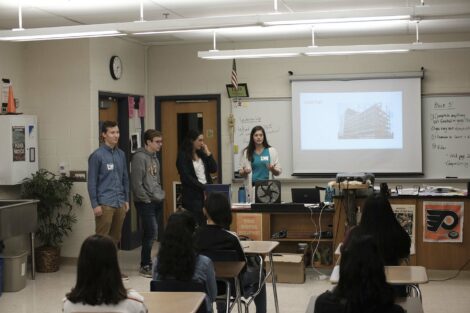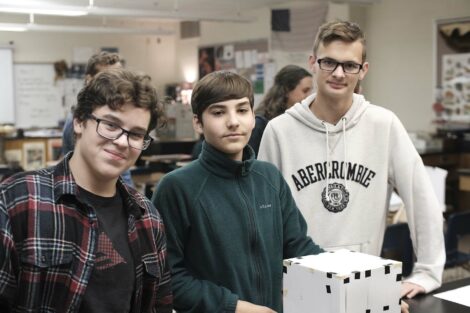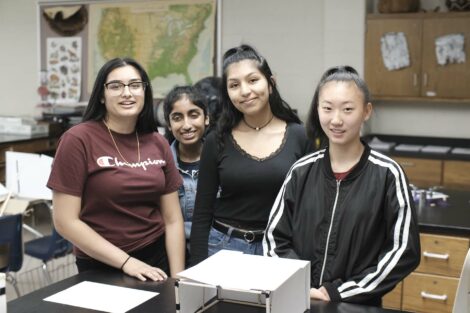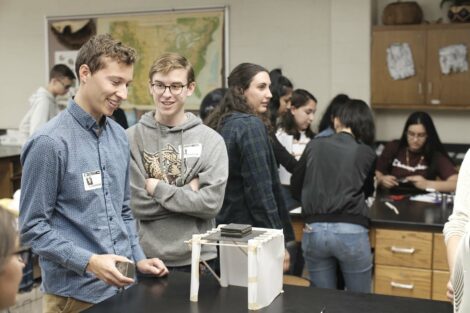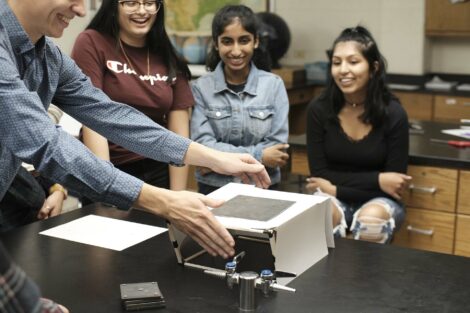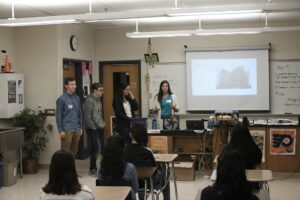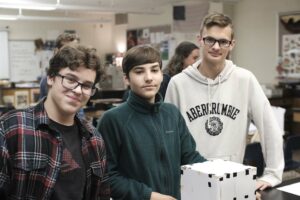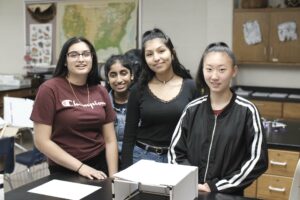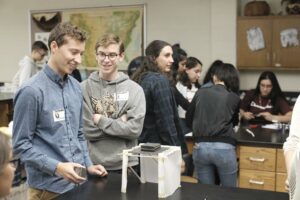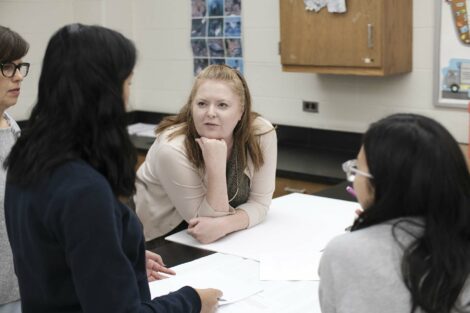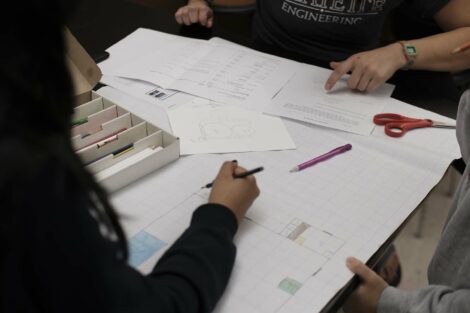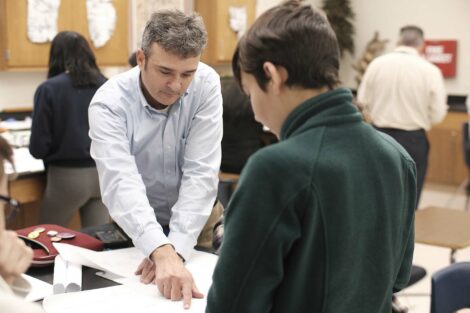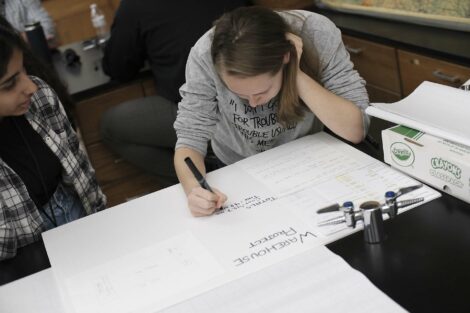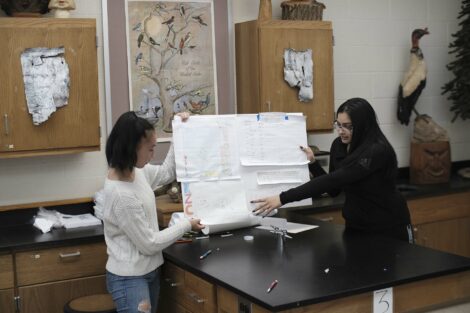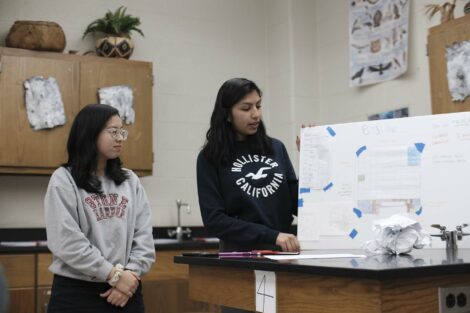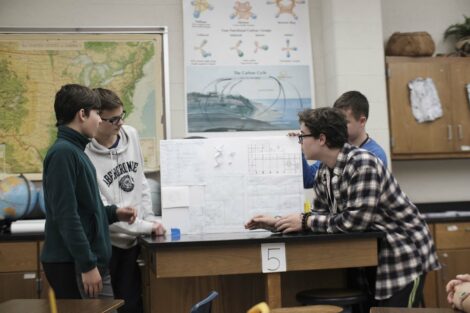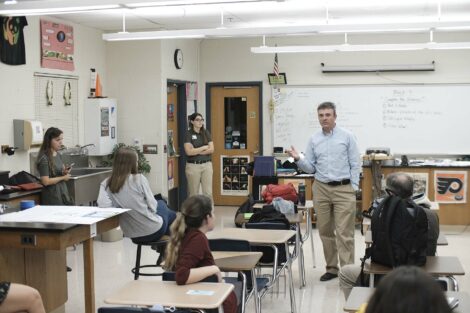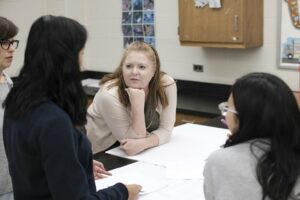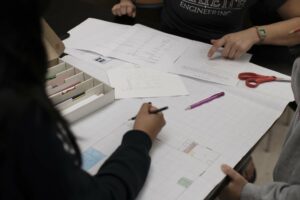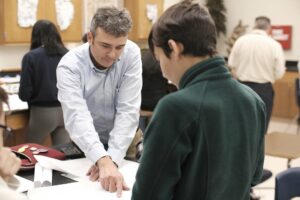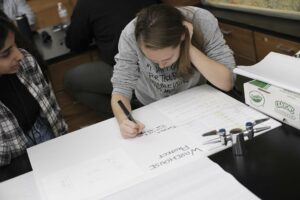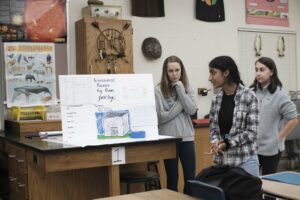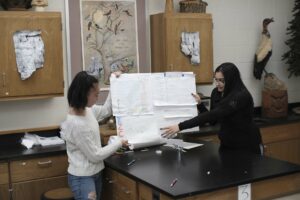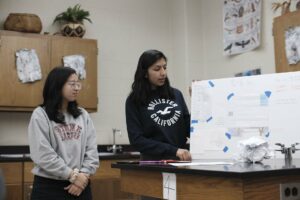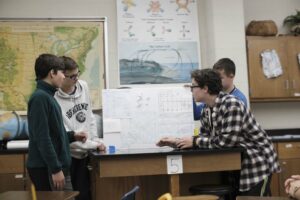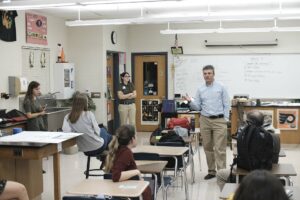High school students expand their knowledge and love of architecture, construction, and engineering
By Stephen Wilson
High school students are huddled in small groups, reviewing graph-paper layouts, budgets, and schedules. They have 30 minutes to finalize their plans for a new warehouse and have to be ready to discuss the decisions they made from foundation to roof in their presentation to experts in architecture, construction, and engineering.
Those three words form ACE, a six-week after-school program that provides mentorship for students interested in pursuing careers in the three fields.
The program at Easton Area High School is in its inaugural phase, having been in the planning phase for over a year with Turner Construction taking the lead. It has brought along some other partners, including Aegis, ALMA Architecture, and Lafayette engineering.
All three entities are in the room to provide last-minute guidance to students, remind them of the lessons learned over the last few weeks, and listen to final presentations.
Professors, professionals, and Lafayette students along with school district leaders are in the room to get a pulse on what has been built.
Needless to say, it has been big.
Designing a Warehouse
After an introductory week, the program began with mini lessons on architecture, plumbing, project management, scheduling, and structure.
Structure and geo-technical lessons brought the College’s civil engineers to the table. Rather than have the faculty lead it, Art Kney, professor of civil and environmental engineering and director of Landis Center for Community Engagement, and David Veshosky, associate professor of civil and environmental engineering, saw this as an opportunity to develop Lafayette student leaders.
So six seniors, Seth Anderson, Rebecca Cook, Dani Gardner, Caden Godsey, Kelly Hogan, and David Rimland, prepared PowerPoint lessons and hands-on activities to help the high school students understand support, force, and load.
Their task was to build a structure out of materials. Quality of the materials varied based on cost, and teams had to work within a budget. So duct tape cost more than electrical or masking tape. Card stock was cheaper than balsa wood.
After a 10-minute building brainstorm, costs increased, and teams only had an additional 15 minutes to construct their structures.
Some teams brainstormed fast while others took their time. Some teams better understood how to brace beams to prevent buckling.
Lafayette students kept track of the teams’ purchases and also made suggestions to help ensure a structure that would withstand various tests.
The high schoolers in the room were hand selected by Kristine Powell, a math instructor for Project Lead the Way, from the students who are in her class.
“Some was based on availability, and some was based on interest,” she says. “But all have an aptitude for it and a career desire in it.”
Teams worked until the moment Lafayette students brought out weights. The dead-load, like the weight from a heavy snowfall, was placed on the roof. The wind-load, a tabletop fan, blew to see if the building would topple.
Some buildings lost a roof or siding in the breeze. Some without proper bracing saw columns buckle from the weight.
Lafayette students who brought their building also took the tests and demonstrated how their building was serviceable—able to provide the function needed and not threaten the live-load (people who would work inside).
Presentations
Each team divided up tasks to show off their warehouse plans. Most were under budget and finished ahead of schedule. Designs varied—where a locker room or restroom landed.
The goal wasn’t a winning design or plan. No winners were named.
“We want to expose them to the work,” says Frank DeLucia from Turner Construction. “If they gain the interest and confidence, we can send them in the direction they like best. So today is about energy and excitement.”
He led the teams through an exercise at the end called Plus, Delta in order to gather feedback about what they liked (plus) and what they’d change (delta).
For Turner employee Leslie Weaver ’17, the program was a way to share information about these fields early in students’ academic planning.
“It’s nice to see them so engaged week after week as they are introduced to these fields,” she says.
“What we are starting to build is far bigger than a warehouse,” adds Kney.
